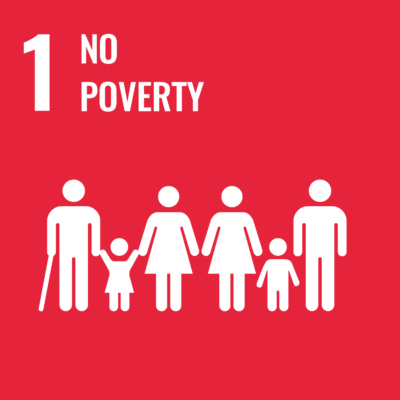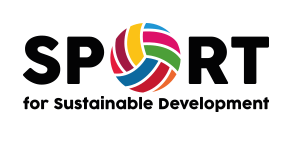
GLOBAL INTRODUCTION OF THE GOAL WITH SOME STATISTICS
On an international scale, the number of people living in extreme poverty declined from 36% in 1990 to 10% in 2015 (UN, 2020). But the pace of change is decelerating due to different reasons including the recent COVID-19 crisis putting at risk populations and endangering the efforts made in the fight against poverty. The economic fallout of the pandemic could increase the existing global poverty as much as half a billion people in the world which represents 8 percent of the world population. (UNU World Institute for Development Economics Research, 2020). This expansion would be the first that poverty has increased globally since 1990. 10% of the world population lives in extreme poverty. This situation is characterised by the lack of solutions for individuals including the access basic needs such as health, education, and access to water and sanitation. On top of that, poor communities are often suffering from deprivation exacerbated by violent conflicts and disasters. The majority of individuals living on less than $1.90 a day reside in sub-Saharan Africa. On a global level, the poverty rate in rural areas is 17.2% (UN SDGs report, 2019) representing more than three times the number of individuals living in poverty in urban areas.
It is important to mention that having a job does not necessarily help people to escape the poverty trap. Decent living of employed workers and their families is not always ensured as 8% of individuals having jobs live in extreme poverty. Vulnerable individuals such as children are at risk of poverty. One out of five children live in extreme poverty. In order to reduce children’s poverty, social protection and services needs to be provided and ensured. Often deprived from such services, individuals are excluded from society schemes and cannot always access basic services. Some countries lacking resources to implement sustainable policies do not provide their citizens with appropriate opportunities and therefore put individuals at risk due to their poor living conditions.
MORE THAN 10% OF THE POPULATION IS LIVING WITH LESS THAN 1.90$ PER DAY.
Much related to the other Sustainable Development Goals, poverty is affected by a wide range of factors impacting individuals on the opportunities offered to them to escape poverty.
HOW CAN SPORT BE USEFUL TO REACH THE GOAL?
Sport could be a strong vehicle for individuals to help them escape the poverty trap. Often confronted with the lack of adequate opportunities, individuals suffering from poverty do not always have the opportunity to practice sport. The barriers to participate in sport practice are very high in some regions of the world depriving individuals from participation. These barriers can be the inadequate access to public facilities, the impossibility to practice sport due to conflicts, the lack of equipment, or the costs incurred by the sport practice. Nevertheless, participation in sport, physical education and physical activity could represent an opportunity for these individuals to develop their skills, competence, and social networks. Supporting and reinforcing the competencies and values of players through teamwork, cooperation, fair-play, and goal-setting, sports can help individuals to develop transversal skills which they can utilize on the labour market and/or education.
Additionally, sport can also play a role in leveraging the voices of the most deprived in order to defend their rights, advocate for better living conditions or access social security. The efforts made in sport are self-spoken for participants to defend their cause ranging from women’s rights to participation in the labour market. Decision making platforms are not usually accessible for individuals living in deep poverty, but sport gives them a unique chance to raise their voice and speak out on a similar level like more privileged members of the society.
Last but not least, sport can also be a very efficient driver to alleviate poverty by raising funds and gathering major stakeholders acting for a better world. Sport initiatives can raise and generate funds for poverty programs ensuring the empowerment of deprived individuals. Mega sport events could be drivers for private organisations to raise money for charities as well as field projects supporting the local population.
Consequently, sport offers stakeholders and deprived individuals an opportunity to alleviate poverty in different contexts. Several sport-based initiatives around the world have proven to be efficient and help to address the SDG 1.
Examples
Magic Bus – India
Magic Bus equips children and young people in the age group of 12 to 18, with the skills and knowledge they need, to grow up and move out of poverty. This takes them from a childhood full of challenges to a life with meaningful livelihoods. https://www.magicbus.org/
Love Fútbol – Latin America
Love Fútbol is a global non-profit that engages and mobilizes communities to create, reclaim and redefine their own football pitches as sustainable platforms for social change. https://www.lovefutbol.org/
Tiempo De Juego – Colombia
Tiempo De Juedo uses play as a tool for community transformation, to promote the capacities of children and young people, inspiring them to be agents of change. The organization helps to promote abilities in children and adolescents, inspiring them to achieve their dreams.
Waves for Change – South Africa
Waves for Change recognise that surfing is a great way to engage young people, who soon started sharing their stories and challenges. Using surf as a tool for youth to express themselves, the organization targets youth located in South Africa.



